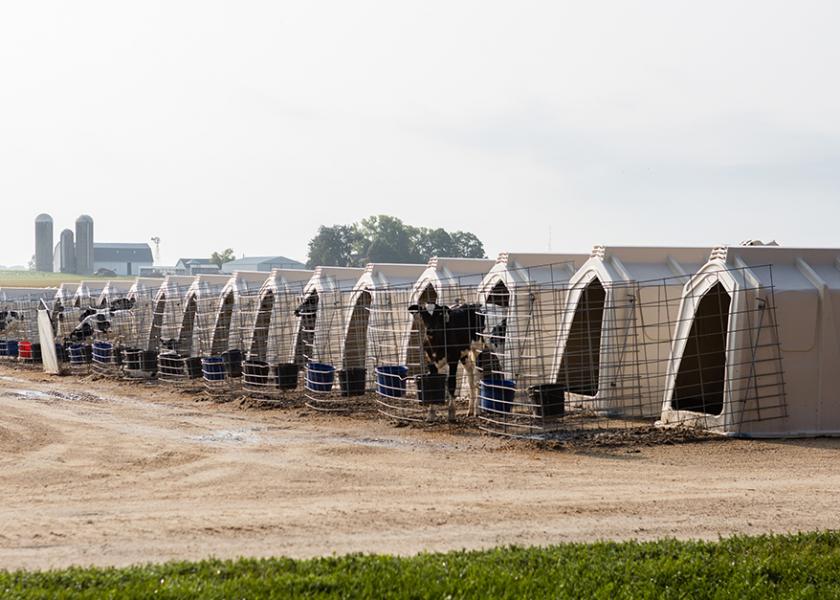Beating the “Summer Slump”

When it comes to calf and heifer nutrition, heat stress deals a double whammy. The animals need to expend more energy for body heat regulation, while at the same time they don’t feel like eating, which reduces dry-matter intake.
A recent review published in the Journal of Animal Science and Biotechnology evaluated a large collection of studies on the impact of heat stress on dairy calves and heifers. Consistently, they showed:
- Calves and heifers subjected to heat stress had lower feed intake, average daily gain (ADG), and feed efficiency, compared to animals in cool or neutral climate conditions.
- Energy expenditure on maintenance and metabolism increases to remove body heat load.
- Gastrointestinal motility decreases in the body’s attempt to reduce metabolic heat, so lower ruminal passage rates of feed have been observed.
- Rumen microbiota and fermentation in older heifers also are affected by heat stress, with a shift in the balance of volatile fatty acids (VFAs), which provide the main energy supply for growing heifers.
Nutritional Strategies
The review authors suggested that, in addition to physical cooling strategies like shade and misters, and some select breeding strategies, nutritional alterations may help calves and heifers navigate heat stress without sacrificing gain. They include:
- Increasing volume and nutrient density in liquid rations of preweaned calves, to compensate for the reduction in starter-grain intake during heat stress.
- Increasing the ration nutrient density for older heifers. The authors proposed increasing dietary fat without reducing dietary fiber, because heifers still need fiber to ruminate and maintain health. They said added fat has been shown to improve the efficiency of converting dietary fat to body fat, producing less systemic body heat compared to digesting protein and carbohydrates.
- Supplementing heifer rations with zinc and vitamins A, C, and E to help relieve oxidative damage due to heat stress.
- Balancing heifer rations for dietary cation-anion difference (DCAD) to support electrolyte balance, help maintain the blood-acid base, and correct mineral deficiencies caused by loss of sodium and potassium due to sweating.
When should these nutritional strategies be deployed? Probably sooner than you think as the warm season approaches. The authors stated the thermoneutral zone of calves – beyond which they begin to feel heat stress – is between 55 and 77°F. For heifers gaining 1.8 lbs./day, it’s between 32 and 59°F.
For more on heat stress, read:
- Feeding Strategies to Mitigate Heat Stress
- Pour Hydration to Heat-stressed Calves
- Keep Cow Handling to a Minimum During Hot Weather







